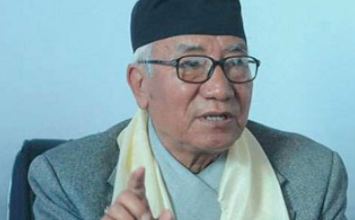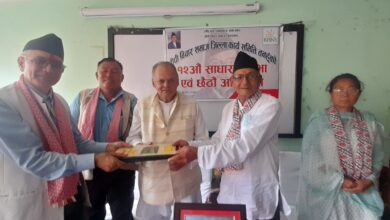Mike Pompeo Says US Shifting Military from Europe to Face Chinese Threat to India and Southeast Asia
US Secretary of State Mike Pompeo said on Thursday the Chinese threat to India and Southeast Asian nations is one of the reasons America is reducing its troop presence in Europe and deploying them to other places. He made the remarks in response to a question at the Brussels Forum that he had addressed virtually.
China and India were involved in violent clashes earlier this month in Eastern Ladakh’s Galwan Valley in which at least 20 soldiers from the Indian Army were killed. While the Chinese suffered casualties, the numbers are still not known.
When asked why the US had reduced the number of troops in Germany, Pompeo said if US troops were no longer there, it was because they were being moved to other places. He said the actions of the ruling Chinese Communist Party meant there were “threats to India, threats to Vietnam, threats to Malaysia, Indonesia and the South China Sea challenge”.
“We are going to make sure the US military is postured appropriately to meet the challenges,” he said.
Last week Pompeo criticised the Chinese Army for “escalating” the border tension with India and militarising the strategic South China Sea. He also described the ruling Communist Party of China (CPC) as a “rogue actor.”
In a scathing attack on the Chinese government, Pompeo said the Communist Party of China wants to undo all the progress the free world has made through institutions like the NATO and adopt a new set of rules and norms that accommodate Beijing.
“The PLA (People’s Liberation Army) has escalated border tensions with India, the world’s most populous democracy. It’s militarising the South China Sea and illegally claiming more territory there, threatening vital sea lanes,” Pompeo had said a day after he expressed deep condolences to India on the death of the 20 soldiers.
Earlier this month, Pompeo has that China’s actions, be it on the India border, or in Hong Kong or in the South China Sea, have been part of the behaviour of the ruling Communist Party in Beijing in the recent past.
China has been fast expanding military and economic influence in the Indo-Pacific region, triggering concern in various countries of the region and beyond.
China is engaged in hotly contested territorial disputes in both the South China Sea and the East China Sea. Beijing has built up and militarised many of the islands and reefs it controls in the region. Both areas are stated to be rich in minerals, oil and other natural resources and are vital to global trade.
Pompeo said he would open a dialogue with the European Union on China and voiced hope it would lead to tougher action.
Pompeo said he had accepted a proposal for a dedicated channel on China policy with the 27-nation bloc as recommended by EU foreign policy chief Josep Borrell during virtual talks with him on June 15.
Pompeo acknowledged divergent views on China within the EU, where some nations have developed strong trading links with the Asian power, but hoped the dialogue could serve as a “catalyst for action.”
“Once we’re confident that we have a shared understanding of the threat that is posed by the Chinese Communist Party, then we can begin to take action,” Pompeo told the think tank’s Brussels Forum, held virtually due to the coronavirus.
“We will work to make sure we have a shared set of facts and then create a set of proposals for things that we can do together.”
Pompeo has sought with limited success to press other nations to shun Chinese telecom giant Huawei, warning that it poses risks to national security and personal privacy.
President Donald Trump’s top diplomat has also been at the forefront of promoting a theory, discounted by mainstream scientists, that the virus behind COVID-19 originated in a Chinese laboratory.
(With inputs from agencies)
China and India were involved in violent clashes earlier this month in Eastern Ladakh’s Galwan Valley in which at least 20 soldiers from the Indian Army were killed. While the Chinese suffered casualties, the numbers are still not known.
When asked why the US had reduced the number of troops in Germany, Pompeo said if US troops were no longer there, it was because they were being moved to other places. He said the actions of the ruling Chinese Communist Party meant there were “threats to India, threats to Vietnam, threats to Malaysia, Indonesia and the South China Sea challenge”.
“We are going to make sure the US military is postured appropriately to meet the challenges,” he said.
Last week Pompeo criticised the Chinese Army for “escalating” the border tension with India and militarising the strategic South China Sea. He also described the ruling Communist Party of China (CPC) as a “rogue actor.”
In a scathing attack on the Chinese government, Pompeo said the Communist Party of China wants to undo all the progress the free world has made through institutions like the NATO and adopt a new set of rules and norms that accommodate Beijing.
“The PLA (People’s Liberation Army) has escalated border tensions with India, the world’s most populous democracy. It’s militarising the South China Sea and illegally claiming more territory there, threatening vital sea lanes,” Pompeo had said a day after he expressed deep condolences to India on the death of the 20 soldiers.
Earlier this month, Pompeo has that China’s actions, be it on the India border, or in Hong Kong or in the South China Sea, have been part of the behaviour of the ruling Communist Party in Beijing in the recent past.
China has been fast expanding military and economic influence in the Indo-Pacific region, triggering concern in various countries of the region and beyond.
China is engaged in hotly contested territorial disputes in both the South China Sea and the East China Sea. Beijing has built up and militarised many of the islands and reefs it controls in the region. Both areas are stated to be rich in minerals, oil and other natural resources and are vital to global trade.
Pompeo said he would open a dialogue with the European Union on China and voiced hope it would lead to tougher action.

Pompeo said he had accepted a proposal for a dedicated channel on China policy with the 27-nation bloc as recommended by EU foreign policy chief Josep Borrell during virtual talks with him on June 15.
Pompeo acknowledged divergent views on China within the EU, where some nations have developed strong trading links with the Asian power, but hoped the dialogue could serve as a “catalyst for action.”
“Once we’re confident that we have a shared understanding of the threat that is posed by the Chinese Communist Party, then we can begin to take action,” Pompeo told the think tank’s Brussels Forum, held virtually due to the coronavirus.
“We will work to make sure we have a shared set of facts and then create a set of proposals for things that we can do together.”
Pompeo has sought with limited success to press other nations to shun Chinese telecom giant Huawei, warning that it poses risks to national security and personal privacy.
President Donald Trump’s top diplomat has also been at the forefront of promoting a theory, discounted by mainstream scientists, that the virus behind COVID-19 originated in a Chinese laboratory.
(With inputs from agencies)




